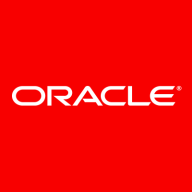

Microsoft Parallel Data Warehouse and Oracle Exadata are leading solutions in the enterprise data management and warehousing sector. Oracle Exadata appears to have the upper hand in performance due to its integrated hardware and software designed for high performance.
Features: Microsoft Parallel Data Warehouse enhances performance, particularly for data loading, with lower infrastructure cost and supports diverse database systems integration. Oracle Exadata provides fast read/write times with features like Smart Scan, Hybrid Columnar Compression, and engineered system efficiencies.
Room for Improvement: Microsoft Parallel Data Warehouse faces query handling limitations, integration challenges with non-Microsoft tools, and needs to improve scalability and error messaging. Oracle Exadata's high costs, complex patching process, and limited virtualization performance necessitate improvements for broader adaptability and reduced expense.
Ease of Deployment and Customer Service: Microsoft Parallel Data Warehouse offers deployment flexibility in public and hybrid clouds and generally satisfactory customer support. Oracle Exadata's primary on-premises deployment limits flexibility, and its customer support requires enhancement in technical assistance for complex setups.
Pricing and ROI: Microsoft Parallel Data Warehouse is competitively priced with significant ROI benefits for handling large data volumes efficiently, especially in government sectors. Oracle Exadata is expensive, aiming at large enterprises, and though it offers substantial ROI through performance benefits, its price is a barrier for smaller businesses.
The investment is good, which is why people choose this hardware.
I would rate my experience with technical support around six on a scale of 1 to 10 because I have not had a particular experience with technical support.
If I were to rate their support from one to ten, I would say between nine to ten.
This involved creating blueprints for integrating Oracle products into client systems, followed by technical presentations to Oracle teams and stakeholders.
Exadata comes with a platinum gateway and comprehensive support, which often gets immediate attention with severity one cases.
I give the scalability an eight out of ten, indicating it scales well for our needs.
As a consultant, we hire additional programmers when we need to scale up certain major projects.
Within a site, scalability is excellent.
Microsoft Parallel Data Warehouse is stable for us because it is built on SQL Server.
Once installed, Exadata is very stable.
Addressing the cost would be the number one area for improvement.
It would be better to release patches less frequently, maybe once a month or once every two months.
The ETL designing process could be optimized for better efficiency.
I believe that there is still room for improvement in Oracle Exadata, as they are putting AI features on those databases, which is making the database more user-friendly.
There are minor areas where improvement is needed, such as making the user interface more user-friendly and enhancing configuration and customization options.
I cannot create an extended rack cluster with one node on one site and another node on a different site.
Microsoft Parallel Data Warehouse is very expensive.
I would rate the price an eight on a scale from one to ten, indicating it is fairly expensive.
I find its pricing reasonable and cost-effective for large organizations, but for smaller organizations, it may not be that useful.
The columnstore index enhances data query performance by using less space and achieving faster performance than general indexing.
The biggest advantage of Microsoft Parallel Data Warehouse is the possibility to stop or pause the service because it can be very expensive.
There's a feature that allows users to set alerts on triggers within reports, enabling timely actions on pending applications and effectively reducing waiting time.
It also offers high backend speed between self-storage units and servers, which is beneficial for processing.
The most valuable features of Oracle Exadata are its high availability and cluster environment.
If a customer cannot tune their applications, this will help them to run the database and run the application without any tuning itself.
| Product | Market Share (%) |
|---|---|
| Oracle Exadata | 9.9% |
| Microsoft Parallel Data Warehouse | 1.7% |
| Other | 88.4% |


| Company Size | Count |
|---|---|
| Small Business | 16 |
| Midsize Enterprise | 6 |
| Large Enterprise | 21 |
| Company Size | Count |
|---|---|
| Small Business | 47 |
| Midsize Enterprise | 14 |
| Large Enterprise | 86 |
The traditional structured relational data warehouse was never designed to handle the volume of exponential data growth, the variety of semi-structured and unstructured data types, or the velocity of real time data processing. Microsoft's SQL Server data warehouse solution integrates your traditional data warehouse with non-relational data and it can handle data of all sizes and types, with real-time performance.
Oracle Exadata allows enterprises to run any Oracle Database workload with the highest performance, scale, availability, and security on fully compatible cloud and on-premises infrastructure. Exadata uses a scale-out design with unique optimizations that include persistent memory, SQL query offload, and built-in resource management to optimize performance for OLTP, analytics, machine learning, and mixed workloads running in consolidated environments. By running hundreds or thousands of optimized Autonomous Database and Exadata Database instances on Exadata Cloud or Cloud@Customer infrastructure, customers are able to minimize their infrastructure, reduce management, improve developer productivity, and lower total costs by up to 40%, as described in Wikibon’s analysis (PDF).
The main benefit of Exadata is its speed. It hosts operating systems, CPU memory, and hard drives. It runs all types of databases, including online transaction systems, processors, and data warehouses, while remedying the poor performances of older databases.
Oracle Exadata features a simple and fast database storage system that protects and backs up your critical data. It accelerates data warehouse performance for faster access to business information and data. It is the ideal database solution for companies looking to build up their infrastructure from scratch.
Oracle Exadata Database Machine Key Benefits
Accelerate database processing: Exadata Storage Server implements a unique, highly efficient database-optimized storage infrastructure that enables Exadata’s unparalleled performance without any of the bottlenecks that traditional storage experiences. Each storage server contains CPU processors that are used to offload database processing. The CPUs in the storage servers do not replace database CPUs, but work alongside them to accelerate database workloads.
Reviews from Real Users
Oracle Exadata stands out among its competitors for a number of reasons. Two major ones are its robust performance and its wide variety of database features that make it a comprehensive database solution.
Adriano S., an IT system integrator at a financial services firm, writes, "Oracle Exadata's performance is one of its best features. We are very satisfied with it. The previous equipment used to make a payment for all the government employees used to take at least two days for some of the transactions. Now, it will take hours to make the same amount of payments. Another thing is the flexibility to organize all our databases. We can use it with new features that come with this version of Oracle 19c, which is the container database. With container databases, we can work with many databases, organized, and segregated, and still access the functions and management, the things that most of the technical people like to have in place."
Paulo X., a sales manager at LTA-RH Informatica, notes, "Regarding features, there are so many that we can offer to customers. When we sell Exadata Cloud, there are many options to choose from, especially when it comes to enterprise database options. In my experience, the main features that are appreciated are various ones like GPS and the assortment of security options."
We monitor all Data Warehouse reviews to prevent fraudulent reviews and keep review quality high. We do not post reviews by company employees or direct competitors. We validate each review for authenticity via cross-reference with LinkedIn, and personal follow-up with the reviewer when necessary.